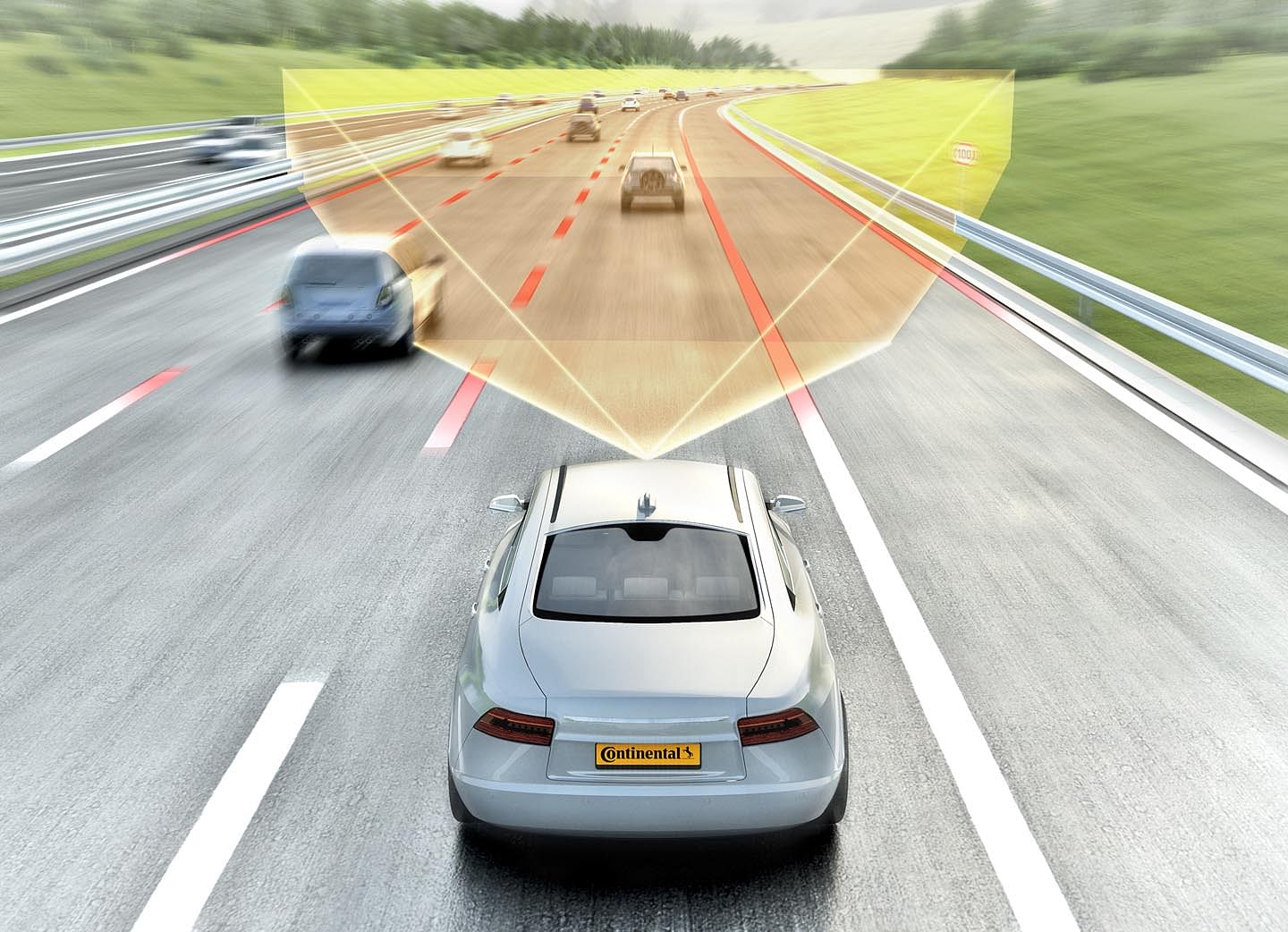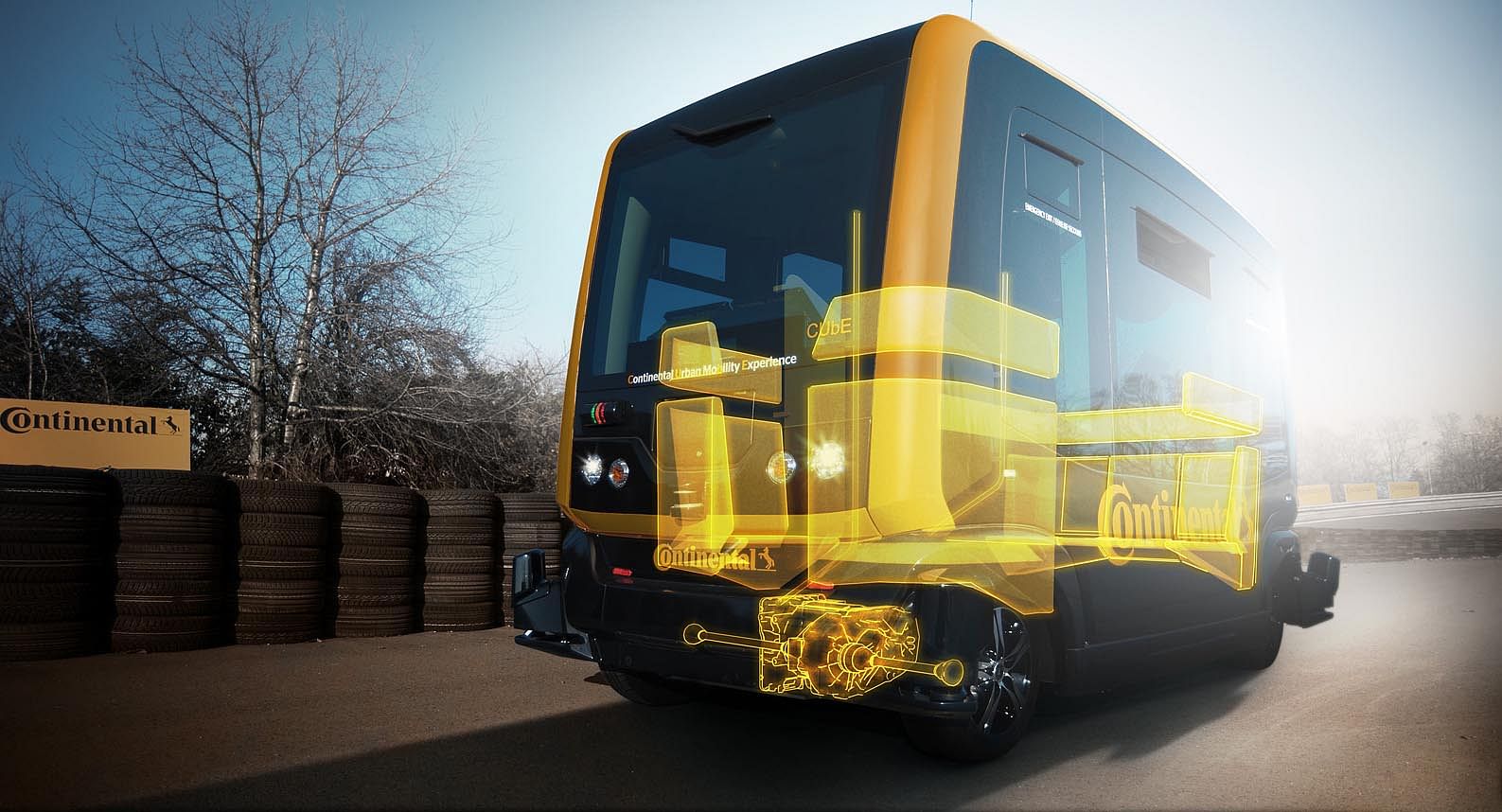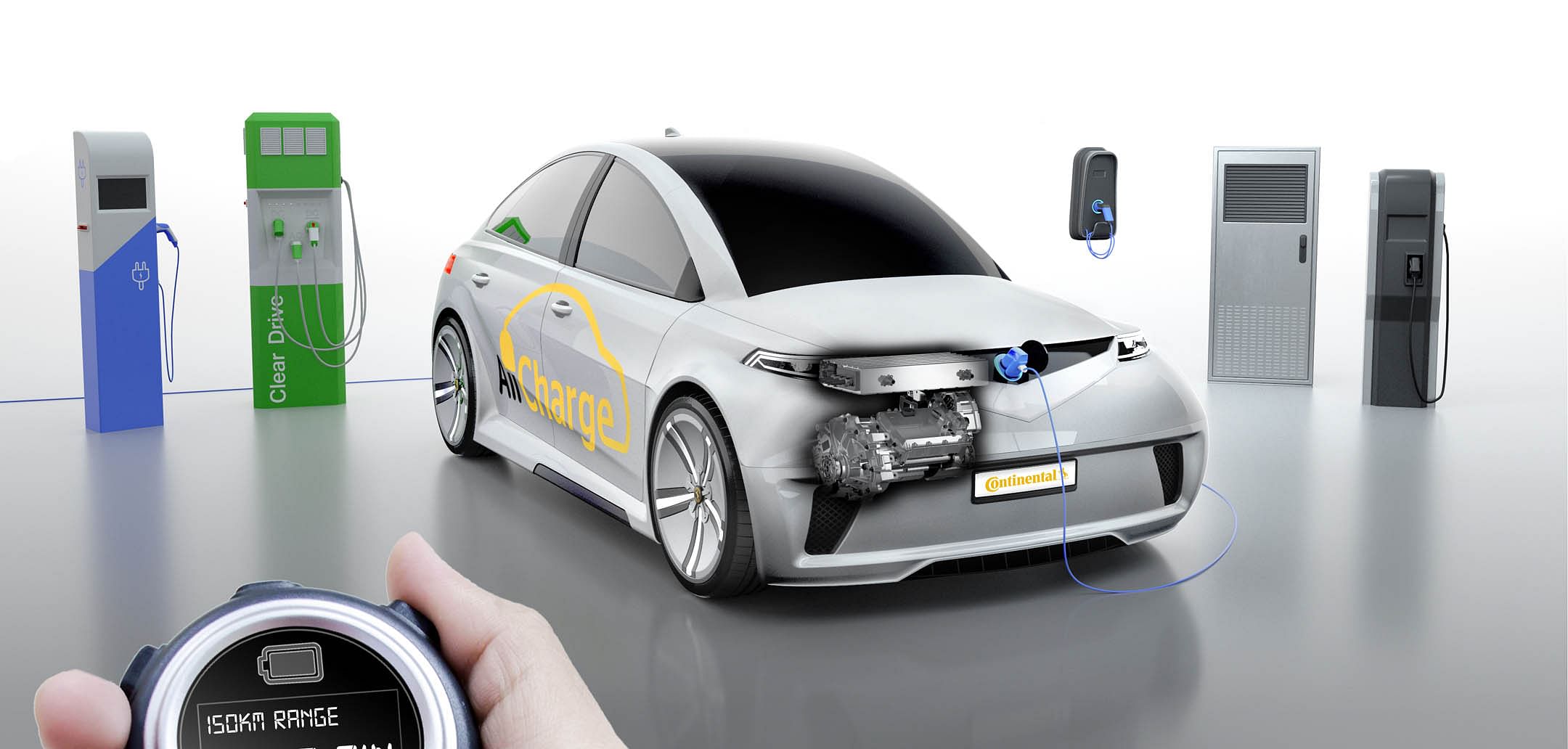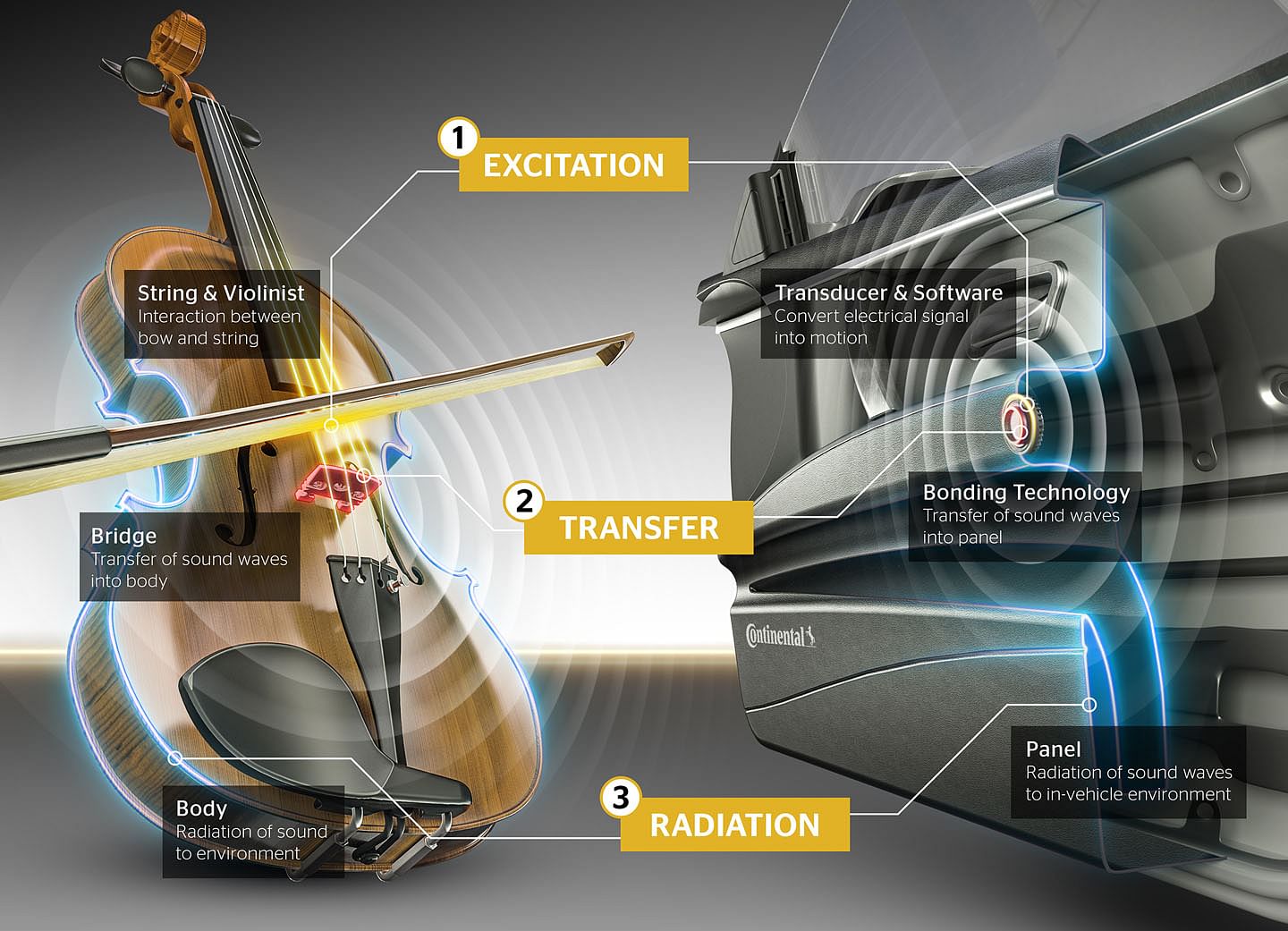Continental targets seamless, driverless and green mobility
German Tier 1 supplier readies a slew of technologies to leverage the three growing megatrends of electrification, connectivity and autonomous driving. Sumantra B Barooah reports from the TechShow held in Hannover.
On a summer day last month in Contidrom, Continental's tyre test facility near Hannover which turns 50 this year, hosted what could be called a fair for anyone interested in technology. We were given a full lowdown of automotive technologies in the areas of electrification, automated, and connected driving, at the biennial 'TechShow'. I was here last in 2013. The exhibits at this year's show reflect the rapid preparations by the German Tier 1 supplier to tap the growing and future opportunities.
The future of individual mobility the world over is faced with many challenges. There are nearly 1.3 million traffic fatalities worldwide each year including around 150,000 in India. Rising traffic levels cause emissions and air pollution, which have a negative impact on life expectancy. More than 1.2 billion people spend more than 50 minutes per day driving in their vehicle – but most of the time in traffic jams. In addition, society is ageing and the proportion of older people is growing among drivers.
Continental is working on solutions that mitigate these issues. “Automated driving will provide an important contribution to making life easier for the driver, and to creating a more efficient overall traffic flow, with fewer critical situations or accidents,” says Dr Elmar Degenhart, chairman of the Executive Board and CEO, Continental. The driving assistance systems business, which generates around 1.2 billion euros for Continental currently, is the fastest growing segment in his company. Dr Degenhart expects the business to be of over 2 billion euros by 2020.

If the person at the wheel fails to take over, the Cruising Chauffeur stops the vehicle with a minimum risk manoeuvre.
The technology products and services supplier sees an evolutionary and revolutionary path. With the ‘Cruising Chauffeur’, it offers an autopilot for highway and secondary roads that supports the driver on longer distances and allows the driver to relax during daily commute. There is also an increasing degree of automation at lower speeds when it comes to parking. From assisted -, remote -, garage -, trained - up to valet parking, new functions will take over the sometimes stressful act of parking from the driver. Searching for a parking place will be a thing of the past and parking space will be used more efficient. With self-driving cars (robo taxis) – that are expected to represent a significant market share of worldwide individual mobility in 2030 – the technology company is also concentrating on new forms of future urban mobility.
Automation on highways: Once the Cruising Chauffeur feature is activated, the vehicle takes over from the driver and cruises along the highway, adjusting its speed to traffic conditions and regulations. The driver does not have to take over again until exiting the highway – which the vehicle announces ahead of time. We witnessed, during a ride in the car, that if the driver ignores the vehicle's message, it automatically parks itself on the shoulder of the road.

With Trained Parking, drivers can teach their vehicle routine parking tasks. Once they have been learned, the vehicle can then independently perform parking procedures at the touch of a button.
Automation at low speed: Different automated parking functions, such as Trained Parking, let any driver easily cope with any parking space. Upon request, the function records and stores the sequence of a parking procedure. When it is to be repeated, the driver drives the vehicle near where the recording began and, at the touch of a button, the vehicle independently performs the previously learned parking procedure.
Automation in urban areas: Continental has built a demo vehicle to enable driverless mobility, especially in cities. The concept, named CUbE (Continental Urban mobility Experience) will start its trials at Continental’s Frankfurt location. It is based on the EZ10 by a French startup named EasyMile and can carry 12 passengers.

In the future, Continental will test and research driverless passenger transportation at its Frankfurt location with the CUbE.
Continental does not plan to build or market any autonomous vehicle but is "working and talking with several" carmakers to offer the autonomous driving solutions found in the CUbE. It is a development and a showcase platform for multiple business units of Continental. Solutions for driverless robo taxis are developed cross-divisional. The company has access to an almost complete product portfolio of its own sensors, actuators, control units and communication and networking technology.
The company says it has the complete portfolio for automated driving with systems and components – like surround sensors, control units, tyres, brake systems, entire powertrain systems up to Human-Machine Interfaces as well as a JV with Nexteer in motion control systems.
At the TechShow, Nexteer showcased its innovation of a stowable steering (in autonomous driving mode) which also uses steer-by-wire technology.
ELECTRIFYING THE FUTURE
By 2030, Continental expects full electric vehicles (EVs) to contribute 10 percent of the global automobile industry volume. In the interim period, as industry works on bringing down EV prices, it expects electrification of combustion engines to offer the ‘bridge’. The company's engineers are already developing components to meet the requirements that electric mobility will in future present for vehicle systems outside the powertrain itself. “Electric mobility has implications for the entire vehicle – and the powertrain is at the heart of electrification,” says Dr Degenhart, chairman of Continental’s Executive Board (pictured below).

What we found particularly interesting is a technology package aimed at enhancing the life of the diesel powertrain, which experts say may see demand peak out by 2023 or so. Engineers at Continental were able to reduce nitrogen oxide emissions on a standard Euro 6 diesel engine by more than 60 percent. Even in real-world testing on the road, over an extended temperature range, this keeps NOx emissions well below the legal limits. And while many other measures aimed at reducing pollutant emissions come at the expense of increased fuel consumption, Continental claims a four percent fall in CO2 emissions – according to latest results.
“The diesel engine will continue to play an important role in meeting mobility needs for the foreseeable future,” says José Avila, president of the Powertrain Division and Member of the Executive Board of Continental. “So it is vital for us to develop the technology to support extremely low-pollutant diesel operation.”
The engineers implemented their clean diesel vision in several stages. They began by replacing the standard injection system with Continental’s PCRs5 piezo common-rail injection system. This operates with maximum injection pressures of 2500 bar.
Among other measures, a 48-volt hybrid system based on a belt-driven starter-alternator is also used. The electric motor, with a rated output of around 15 kW, not only allows braking energy to be recuperated and stored as electricity in a small lithium-ion battery but can also assist the internal combustion engine during short, sharp bursts of acceleration.
A further reduction in emissions is achieved by the use of a close-coupled electrically heated catalyst (EMICAT). Irrespective of engine operating strategy the heated catalyst, with a transient power rating of 3 kW, quickly brings the downstream-mounted SCR catalyst up to operating temperature, allowing it to start converting nitrogen oxides.
The heated catalyst reduces nitrogen oxide emissions by a further 14 percent. An additional significant reduction in emissions can be achieved with the help of connected Energy Management (cEM). “The beauty of ‘connected Energy Management’ is, that we can implement a more energy-efficient driving strategy simply by using an improved database,” says Dr Oliver Maiwald, Head of Technology & Innovation with Continental’s Powertrain Division.
Continental is betting on the 48V electric system to drive the future of electrification. One of the most recent production breakthroughs for electrification came with the launch of 48V diesel hybrid versions of the Scénic and Grand Scénic models from French OEM Renault.
INNOVATIVE HIGH-VOLTAGE DRIVE SYSTEMS
On the all-electric front, innovative solutions from Continental include the highly integrated electric powertrain module, which was specially developed for electrification of the high-volume midsized segment of the Chinese car market.

With its compact dimensions (with electric motor, gearbox and power electronics combined in a single unit) this high-voltage drive system for all-electric vehicles or full hybrids is lighter and more powerful than comparable concepts. This also means that it delivers a high level of driving pleasure – a significant factor for the acceptance of electric mobility – to complement its favorable cost. This innovative drive system boasts a high power-to-weight ratio thanks to an output of up to 150 kW and electric torque of up to 400 Nm, with mass of just 75kg.

AllCharge system can always use the maximum output rate, up to 800V and up to 350 kW at all types of charging station – single-phase AC, three-phase AC or high-speed DC.
EASY CHARGING
At TechShow 2017, Continental showcased a couple of charging solutions. The AllCharge system, which is easy for automakers to integrate, turns the vehicle’s electric powertrain into a universal ‘charging system’. Drivers can then charge their vehicle at any type of cable-based charging station, and can always use the station’s maximum output rate. At urban AC charging stations in particular, this can cut the required charging time by a factor of 12. Continental claims a five-minute charge can give a range of 150km.
The company also showcased for the first time a wireless (inductive) charging system for EVs. With this, EVs can be conveniently charged at rates of up to 11 kW by simply parking the car above a charging pad, well aligned (as depicted below).

Continental sees other business opportunities too in the growing trend of electrification. That includes hoses and tyres. It has developed lightweight hoses which have an impact in the driving range of an EV. For example, the hose developers reduced the weight of the oil cooling line by 25 percent, while improving its under- and overpressure resistance by 50 percent. And a new wheel rim concept by Continental could see commercial production within a couple of years.
The wheel rim consists of two aluminium (Al) parts, the inner Al carrier star with the Al brake disc and the outer Al rim well with the tyre. In contrast to conventional wheel brakes, the New Wheel Concept brake engages the Al disc from the inside. This allows it to have a particularly large diameter, which benefits the braking performance. To increase the vehicle’s range, deceleration in the EV generates as much electricity as possible through recuperation, so the wheel brake is used less frequently. The corrosion-free Al brake disc also prevents formation of rust.
“Using conventional brakes is not very effective in electric mobility. The new wheel concept meets all the demands that electric driving places on the brake," says Matthias Matic, Head of Continental’s Hydraulic Brake Systems BU.
CONNECTED TO THE FUTURE
2017 is the first year when the majority of cars produced worldwide will be 'connected cars'. Continental expects over 20 percent of the global car fleet to comprise of connected cars by 2020. "Data is the oil of the 21st century (for the auto industry)," says Helmut Matschi, head of the interior business division and board member, Continental. "Where vehicle connectivity was once simply an added feature, it is now becoming a key technology for intelligent mobility of the future. This is why we are focusing on holistic connectivity for a seamless online connection and developing the entire vehicle into an open system,” says Matschi.
Continental has teamed up with Carnegie Technologies for a solution that enables seamless and disruption-free transition between different wireless networks (mobile telephony, Wi-Fi or satellite systems). To send data packages containing as much data as possible from the cloud to the vehicle and back, the solution can also combine data lines for example from the passengers’ mobile devices as a means of pooling transmission capacities. In a collaboration with Inmarsat, Continental is also using satellite communication – in addition to mobile telephony and Wi-Fi – to provide OEMs and drivers worldwide with the best possible network connection at all times.


But what attracted our special attention at the Continental TechShow 2017 is an in-car sound system that has . . . no speakers! The speaker-less sound system is an innovative system which significantly cuts down on weight and installation volume in the process. Compared with conventional high-end 3D sound audio systems, the speaker-free system requires 95 percent less volume. Equipped with actuators that cause specific surfaces (A-pillar, dashboard, ceiling, rears of front seats) in the vehicle to vibrate, the system works in a similar way to stringed instruments and provides a high-end audio experience for every vehicle class.
NEW BUSINESS OPPORTUNITY
The wide and growing possibilities of connectivity have led to the creation of a new business unit called mobility services at Continental. Alongside new technological and design possibilities in the vehicle, holistic connectivity offers a range of additional benefits, as Matschi explains: “For us, holistic connectivity creates entirely new business models. In addition to our product business, mobility services will become the next key pillar of Continental.”
A central principle for a range of mobility services is: the better a vehicle knows its environment, the safer, more efficient and more user-friendly it is on the road. With eHorizon, Continental demonstrates how a vehicle provides important traffic information to the cloud and other road users using a so-called crowd sourcing function in the driver assistance camera. Numerous mobility services can be implemented on the basis of the resulting database. It is also a central element in the development of automated vehicles.
Continental is also working in partnership with the French national weather service Météo-France and is currently testing eHorizon.weather in more than 200 vehicles in France to adapt and further improve the technology through direct user feedback.
The dynamic automotive industry's landscape is changing at a rapid pace. The above suggest more than clearly that the developments are going to make us see the automobile in a totally different light.
Also read : Dr Elmar Degenhart| Interview| Autocar Professional
RELATED ARTICLES
How Greater Consumer Responsiveness Helped Indian Brands Overtake Global Giants
Once overshadowed by global brands, Indian carmakers now lead the charge in SUVs, EVs, and safety.
From Rs 431 Crore Loss to Recovery: Inside TIL’s Comeback
New ownership charts ambitious turnaround for TIL, India's oldest crane manufacturer.
Why Toyota Is Building Its Carbon-Neutral Future Around India
A look inside the engineering logic driving the world’s largest carmaker as it pursues multiple routes to decarbonisatio...






 30 Jun 2017
30 Jun 2017
 13906 Views
13906 Views





 Prerna Lidhoo
Prerna Lidhoo


 Shahkar Abidi
Shahkar Abidi


